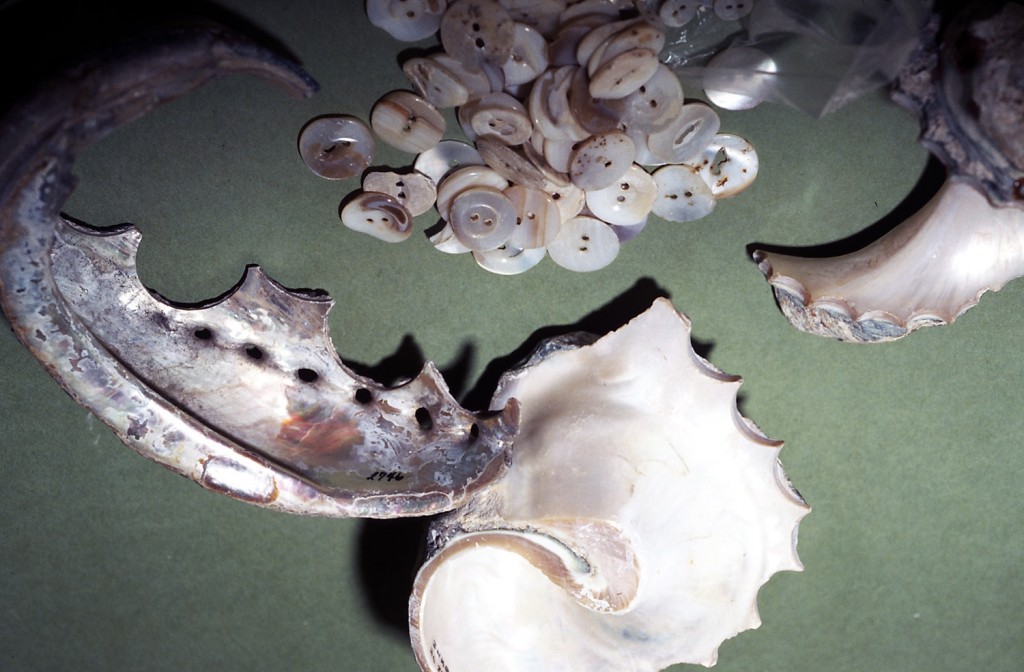Artifact of the Month – September 2014
To Artifact of the Month Index
To PAF Home
LIFE BEFORE PLASTIC!

Abalone and conch shell button blanks and buttons recovered in the early 1970s during the construction of the first Independence National Historical Park Visitor Center (located on South Third Street). The site was the location of a button factory from ca. 1850-1880. (Photo courtesy of Independence National Historical Park, taken in the early 1970s.)
The ubiquitous plastic pearlescent buttons that adorn our shirts and blouses are the modern mass produced counterpart to pearly buttons cut from shells that first became popular in the mid to late-nineteenth century. These buttons, and the scrap shells from which buttons have been cut, were recovered by a construction crew in 1974 when the first Visitor’s Center for Independence National Historical Park was under construction on the corner of Chestnut and Third Streets.
On the left side of the picture is an abalone shell. Abalone was prized as a source of the mother of pearl, which was much sought after by button manufactures. The two shell fragments on the left side of the picture are green turban shells (Turbo marmoratus), also much used in the manufacture of buttons. These buttons and shell scrap are likely waste from a factory operated by George A. Lippincott. Beginning in the early twentieth century his firm was a major producer of pearl buttons and he operated two factories in the vicinity.
In the summer of 2014, a team of archeologists recovered additional evidence of button manufacturing on the site as they monitored the demolition of most of the old Visotor’s Center and began archeological investigations to prepare for the construction of the new Museum of the American Revolution. You can follow the progress of the archeological team at Making The Museum, a social networking blog maintained by the Museum of the American Revolution.
Contributed by Jed Levin, Independence National Historical Park.
To Artifact of the Month Index
To PAF Home
by admin